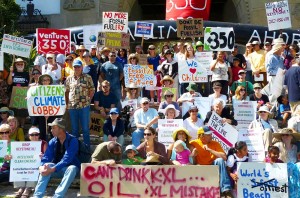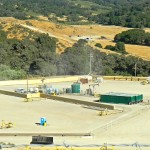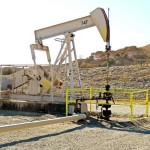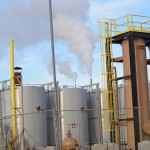
22
Jan, 2016
Upstarts Versus the Oil Boom
Republished from Mission and State.
Last June, Jeff Barnes walked into the Karpeles Manuscript Library in downtown Santa Barbara to attend Democracy School, an educational program established by the Community Environmental Legal Defense Fund. According to CELDF’s website, “Democracy School explores the limits of conventional regulatory organizing and offers a new organizing model that helps citizens confront the usurpation by corporations of the rights of communities, people, and the earth.”
 Not exactly pithy, but you get the point.
Not exactly pithy, but you get the point.
This particular session, organized by the local branch of upstart climate-change fighters 350.org, featured a keynote address by Shannon Biggs from the San Francisco-based human rights group Global Exchange. It promised to instruct the 25 or so in attendance how to use “the community-rights-based approach to reclaim our power in the face of the wealthiest industry in the history of money.” The industry in question being, of course, oil.
Barnes, an oil company consultant, didn’t exactly fit the profile of the average attendee. His business is “marketing and branding,” and his client, Santa Maria Energy, was in the middle of a controversial expansion plan being batted around the county planning commission when Democracy School convened. While others took notes on corporate personhood versus individual rights, among other topics, Barnes said he was “seeking more understanding of the issues on both sides.” This type of understanding can be useful for the “Learn Together” destination on Santa Maria Energy’s website that Barnes conceived and which attempts to allay environmentalists’ concerns about the company’s plans to expand a pilot operation in the Orcutt Hills from 26 to 136 wells.
The work Barnes does for Santa Maria Energy hasn’t been without controversy in the past. Lompoc City Councilwoman Ashley Costa filled a similar post as Barnes. Now, Costa is under investigation by California’s Fair Political Practices Commission, which thought it possibly compromising that she held a seat on the board of Santa Barbara County’s Air Pollution Control District at the same time.
Democracy School’s invitation noted that “The industry has identified Santa Barbara County’s Monterey Shale formation as a target for unconventional extraction techniques.” With around 15.4 billion barrels estimated in the Monterey Shale formation, part of which lies under the county’s surface, that seems like a safe bet. Weighing particularly heavy on many local environmentalists’ minds is the sour, sulfur-rich, thick and heavy oil underneath the shale contained within the fabric of naturally fractured diatomaceous rock, the same kind of rock forming the choppy cliffs cradling the Central Coast.
Barnes’ attendance at Democracy School likely had something to do with SME’s desire to extract some of this reserve with 110 new cyclic-steam-stimulation wells in a picturesque valley in the Orcutt Hills. The process, sometimes called “huff and puff,” involves using steam to heat up the thick oil so it can be extracted. The project is capable of producing nearly 88,000 tons of carbon emissions at peak production, and by the time Democracy School hit town, it had become something of a lightning rod for the collective hopes and fears around the country’s enhanced-extraction oil boom and Santa Barbara’s role in it. Jobs, buffered municipal coffers, global warming, environmental disasters, North County growth versus South County NIMBYism have all been declared at varying times to be hanging in the balance.
One of the project’s sticking points, central to the year-long review of its Environmental Impact Report, was the level of emissions reductions the expansion should meet. One piece of the puzzle is a state law implemented in 2012, AB 32: the Global Warming Solutions Act, intended to get state greenhouse gas emissions down to 1990 levels by 2020. Currently, the law requires at least a 16-percent reduction in emissions from what would be the project’s “business as usual” level. AB 32 allows for some wiggle room in how it is applied and calls for a new scoping plan every five years to adapt to changes, climate and political. The 2013 scoping plan will soon be in effect and will likely reflect mandates that have recently been signed by Gov. Jerry Brown to further lower carbon emissions.
The county has to figure out how to put the pieces of this emissions puzzle together when considering projects such as Santa Maria Energy’s expansion. Some environmentalists had lobbied for a 90-percent emissions reduction. Some planning commissioners sought a 50-percent threshold. Santa Maria Energy’s EIR proposed 29-percent reductions.
Meanwhile, a new generation of environmental activists focused on oil and climate change began coalescing around SME’s expansion and other symbols of the nouveaux oil boom.






You must be logged in to post a comment.